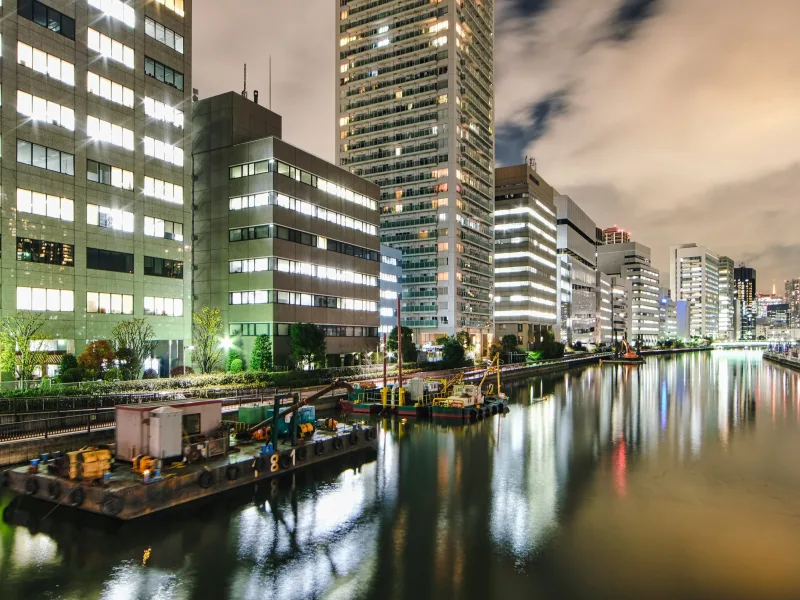Rakusui Bridge in Shinagawa is a compelling spot for urban and waterfront photography, linking the modern bustle of Shinagawa Station with the quieter Tennozu Isle across the Kitashinagawa Canal 北品川運河. Completed in 1964, this 76.6-meter pedestrian bridge stands out for its reddish-orange steel truss design, which adds a bold, graphic element to compositions—especially striking against the muted tones of Tokyo’s industrial bayfront. Framed by seasonal greenery and canal-side cherry blossoms sakura, 桜, the bridge offers evolving scenes throughout the year. In spring, soft petals line the walkways, while autumn brings golden foliage that diffuses the light and deepens the mood of any frame.

Photographers are drawn to Rakusui Bridge not only for its structure but for the vistas it unlocks. From its midpoint, one can capture sweeping views of Tokyo Tower rising behind city high-rises, with boats occasionally gliding through the canal below. As night falls, the bridge’s silhouette becomes more pronounced—unlit but defined by the ambient city glow—making it ideal for low-contrast, long-exposure photography with reflective water surfaces. Its balance of geometry, seasonal variation, and layered urban scenery makes Rakusui Bridge a rewarding stop for those looking to portray Tokyo’s evolving waterfront in a single, thoughtful frame.










